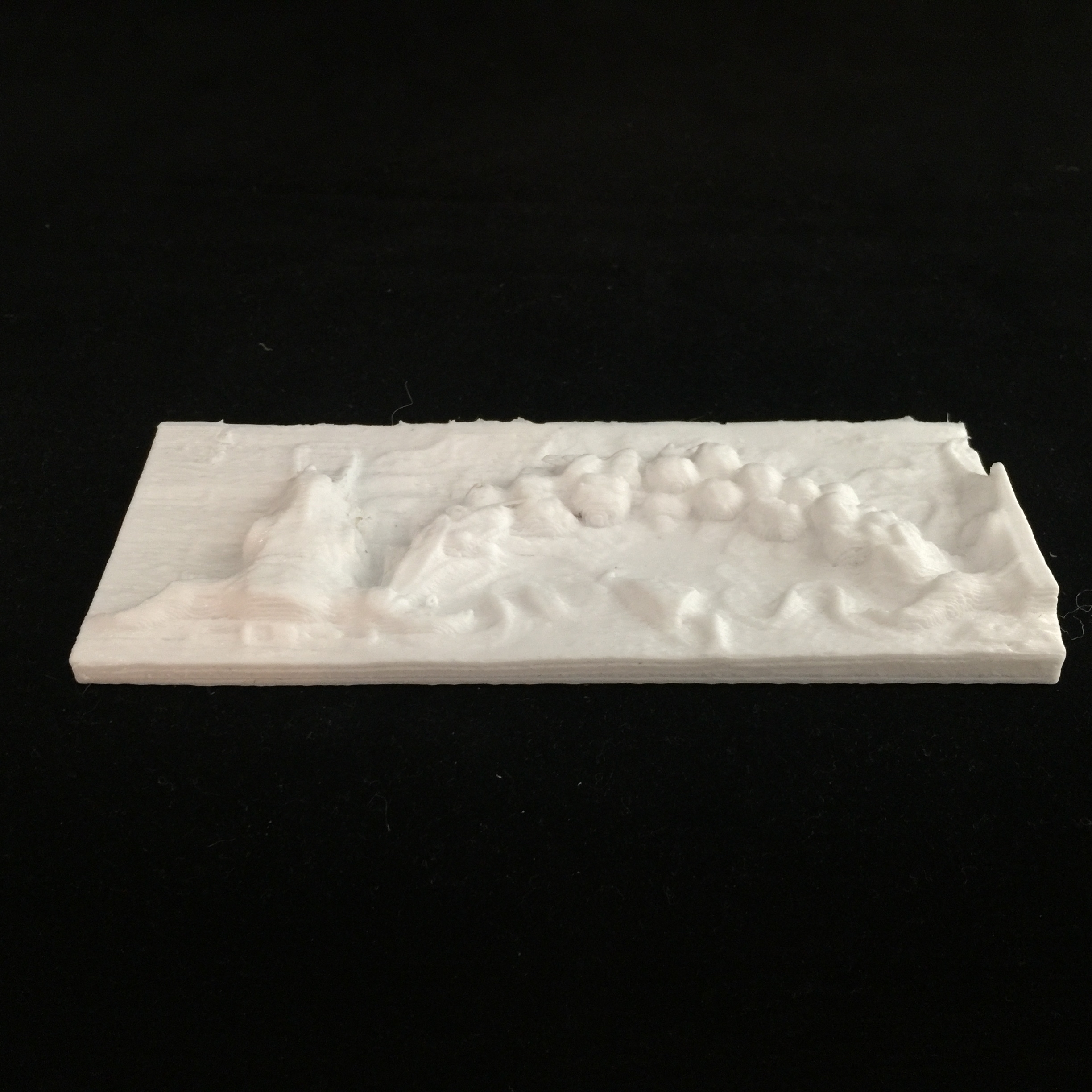
Stone with Bucrania
myminifactory
Human: Bucranium was a popular form of carved decoration used extensively in Classical architecture to adorn the metopes between the triglyphs of the frieze on Doric temples. A bas-relief or painted decor featuring bucrania draped with garlands of fruit or flowers was a Roman motif derived from marble altars, many of which have survived; this motif was later adapted for use on Renaissance, Baroque and Neoclassical buildings. The term is widely believed to refer to the practice of decorating sacrificial oxen, whose heads were displayed on temple walls, a tradition dating back to the sophisticated Neolithic site of Catalhoyuk in eastern Anatolia, where cattle skulls were coated with white plaster. A majestic Doric order was employed for the Basilica Aemilia on the Roman Forum; enough of it remained standing for Giuliano da Sangallo to create a drawing around 1520, reconstructing the facade; the alternation of shallow libation dishes called paterae with bucrania in the metopes reinforces the solemn sacrificial theme. Over time, during the sixteenth century, the connection between bucrania and sacrifices faded, and they became part of a decorative vocabulary that evoked "Roman-ness". In formal, post-antique contexts following classical conventions, the presence of bucrania signifies that the Doric order is the underlying principle, but the Romans were not always rigid in their adherence to this rule. In a first-century fresco from Boscoreale, protected by the eruption of Mount Vesuvius and now housed at the Metropolitan Museum of Art, bucrania and cistae mysticae hang on ribbons from pegs that support garlands, evoking joyful celebrations. The Temple of Vesta in Tivoli, constructed in the Corinthian order, also features bucrania in its frieze, or at least motifs interpreted by Andrea Palladio as conventional skull bucrania. They are actually fleshed ox heads with eyes. Similarly, the Ionic Temple of Portunus in Rome has conventional bucrania in its frieze. This interior relief was taken from the Altar of Augustan Peace constructed by Emperor Augustus.
With this file you will be able to print Stone with Bucrania with your 3D printer. Click on the button and save the file on your computer to work, edit or customize your design. You can also find more 3D designs for printers on Stone with Bucrania.
